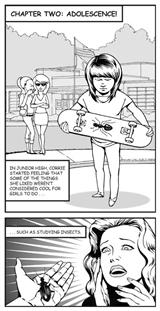I mentioned the 2nd annual International Conference on Nanotechnology: Fundamentals and Applications (ICNFA) in my Sept. 28, 2010 posting. Recently, I decided to interview one of the organizers to find out more about the conference. Dr. Seyed Gholamreza Etemad, who heads the ICNFA 2011 Scientific Committee, very kindly provided answers to my questions. First, a little bit about Dr. Etemad (from the ICNFA’s Keynotes page,
Seyed Gholamreza Etemad is a professor of chemical engineering department at Isfahan University of Technology (IUT-Iran). He is also a co-founder and a member of Center of Excellence of Nanotechnology in Environment at IUT (Iran).Professor Etemad received his B.Sc. and M.Sc. degrees in chemical Engineering from Amirkabir University of Technology (Tehran Polytechnique, Iran). He obtained his PhD from McGill University (Canada) in 1995.
He has served as the chair of the 1st Nanotechnology and Environment Conference in 2007 and the chair of Nanotechnology Workshops in 2009 held at IUT. He acted as the head of the scientific committee for the 1st International Conference on Nanotechnology: Fundamentals and Applications in 2010 (University of Ottawa-Canada). Currently, he is an active member of the scientific and organizing committees of ICNFA 2011. He teaches transport phenomena related courses, renewable energy, and nanotechnology at IUT and university of Ottawa.
Here is a brief preamble from Dr. Etemad describing the conference in more detail before he proceeds to the questions:
Let me first explain a little bit about International ASET Inc. International ASET Inc. was founded in year 2009 as a partnership in Ottawa, Canada. This partnership was formed to perform scientific activities internationally. After holding the First International Conference on Nanotechnology: Fundamentals and Applications in the University of Ottawa, International ASET established an Incorporation and became International ASET Inc.
12 Keynote speakers and approximately 180 papers were presented at ICNFA 2010 in three consecutive days. ICNFA 2010 was able to attract researchers from all around the world.
After successfully holding the first conference, International ASET Inc. decided to organize the 2nd conference of the ICNFA conference series.
a) There are a lot of nanotechnology-themed conferences, why organize
this one?
Nanotechnology is a very fast growing subject which is multi-disciplinary and covers a wide range of scientific fields and applications. Since nanotechnology is a relatively new technology, fundamental approaches are very important. This technology has begun to find different applications in various areas such as: Engineering, Medicine, Arts, Agriculture, and Environment.
The aim of the 2nd International Conference on Nanotechnolgy: Fundamentals and Applications is to gather scholars from all over the world to present advances in the field of nanotechnology and to foster an environment conducive to exchanging ideas and information. This conference will also provide a golden opportunity to develop new collaborations and meet world nanotechnology experts on the fundamentals, applications and products.
b) Usually international conferences are held in various countries over the years but this conference is being held for the second year in a row in Ottawa and the conference is only 2 years old. What is the reasoning behind this?
Since International ASET Inc. was founded in Ottawa, for the first few conferences, we decided to set the venue to the city of Ottawa and the University of Ottawa. We are already negotiating with some of our colleagues in other universities and we will look forward to having some of the future conferences in other countries.
c) Your keynote speakers are covering a very wide range of topics from nanoeducation to nanoelectronics to drug delivery and more. What is the strategy behind offering such a wide range? (In other words, why?)
As mentioned in part (a), Nanotechnology is a multi-disciplinary subject and we expect to attract attendees from different Nanotechnology related areas. Therefore, the Keynotes were chosen from different fields of Nanotechnology.
d) What kinds of results or outcomes did you see as a consequence of the first conference?
ICNFA 2010 brought together Scientists and Researchers from different scientific organizations of various countries and could foster an environment conducive to exchanging ideas and information.
e) Is there anything about the conference that hasn’t made it to the website yet that you are excited about?
We are mostly exited about meeting the engineers, scientists, researchers, and university students from all around the world. We have received interesting manuscripts and we look forward to the presentations of the accepted manuscripts.
f) What was the attendance for the first conference and do you have any idea what numbers to expect for this one?
Approximately 200 people attended the first conference. So far we have received more papers and we expect to have more attendees compared to last year. Our attendees include scientists and engineers from research centers and industries, university professors, and graduate students.
g) Is there anything you’d like to add?
We would like to add that International ASET Inc. is also holding a conference on Environmental Pollution and Remediation (ICEPR’11) this year. This conference is the first of its series and will also be held yearly just like ICNFA.
In the end we would like to thank the University of Ottawa and CSA (Canadian Standards Association) for their support of the ICNFA conference series.
Thank you Dr. Etemad for satisfying my curiousity and, even, anticipating an additional question or two with your preamble. (At the end of almost of every interview, there’s almost always another question or two that I wished I’d had the forethought to ask.)
